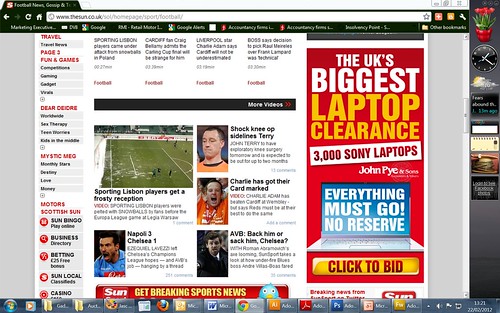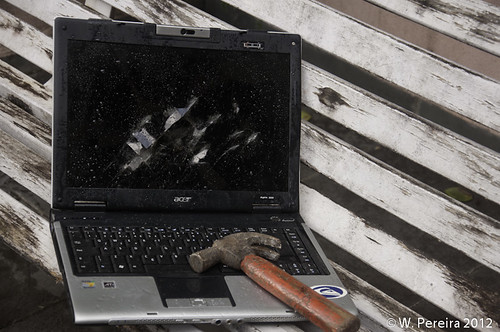Professional small-format photos the easy way, with a contract transportable photo printer practically the same size as a loaf of bread and engineered like a nuclear powered toaster! It makes digital photography easy and fun for all the family, even the Windows print driver is comparatively simple. This is practically the swan-song for the once lucrative but frustrating and time enchanting industrial photo processing market.
The PictureMate 500 is marketed as a printing accessory for any digital camera, it supports direct printing from PictBridge cameras, favorite digital camera technologies and a computer is elective for most printing tasks, however it can not execute complicated manipulations, such as red eye reduction.
Slightly more costly and 40% faster than Epson's traditional PictureMate printer, this updated model incorporates portability with the beloved look and well-designed functionality of its forefather with an improved menu principles to boot.

It recognises Jpeg and uncompressed Tiff files automatically, resolutions fluctuating from 80 X 80 to 4600 X 4600, printing from a camera, a memory card, directly as a printer or from a camera phone via the elective Bluetooth adapter (Rrp £59.99); I just use my own cheap adaptor.
The remarkable ability unmistakably is what makes this a good system, all things else is just very nice, if you want to see any petite vertical banding or ink droplets (flaws found on all inkjet printers) you have to look unmistakably closely, but unlike other inkjet-based dedicated photo printers which use a 3 colour process, you get expert small-format photos not just photo sized printouts.
It uses an exclusive archival 6 pigment (cyan, yellow, magenta, black, red, and blue) and hi-gloss Micro Piezo inkjet technology contained within a single-piece cartridge which means the prints are of best ability and last two to four times longer than the foremost brands of inkjet based photo printer models.
Borderless 4x6-inch (15cm x 10cm), printing at a resolution of 5,760-by-1,440Dpi, takes a petite under 90 seconds. The print size is petite to 6x4in and it prints relatively gently compared to quarterly inkjet models, but the prints have a rated lifespan of 104-years, as opposed to just 75 years for the proper chemical process offered by industrial developers.
It is controlled by 12 command buttons scattered nearby a 2.4-inch colour Lcd (320x240 pixels), it automatically optimises each photo for colour and ability all of which makes this printer a formidable contract personal photo lab.
As well as a set of defaults, it has a range of fun effects, such as adding one of 16 frames, or printing in black and white or sepia tones. You can also zoom in on, and rotate, a specific area, cropping the rest of the image from your photo.
Its Lcd screen is good because it allows simple execution without having to have a PictBridge enhanced camera and being restricted to using the camera's display, where you whether use the camera to control printing or 'mark' all the images beforehand from the cameras interface, which I find annoying.
The price per photo rivals traditional high road processing. Prints cost practically 22p each, this may sound relatively high, but it's quite cheap compared to other dedicated photo printers - especially dye-sublimation models.
As a comparison, taking your images to Tesco costs 10p per print, but takes an hour regardless of the number of images. My local Sava-centre charge 35p per print (5-colour process), but this takes about 50 seconds each;
Good points:
1) competing and cost effective, water, smudge unyielding fade free, durable and expert small-format photographs in minutes at a resolution of up to 5760 dpi. (saturation, skin tones, details all good).
2) The thrifty and convenient consumable packs include cartridge and paper for practically 100 glossy 10x15cm photo prints is sold in a combo pack.
3) The 6 printing pigments are contained within a single-piece cartridge.
4) PictBridge enhanced but does not wish any specific technologies except for compatibility with one of the supported warehouse media formats.
5) Easy to use 3 step printing process with an intuitive interface and an improved navigation buildings for the printer's menu system.
6) selecting only photos on the warehouse media based on date of creation.
7) Printing and copying directly to/from Cd-R/Rw, Zip disk or Flash media.
8) The ability to automatically print assorted photo sizes including passport sized photos (I haven't yet attempted to use this feature in anger, but I see no theorize why the passport office should refuse the product - the image is up to you. :-)
9) The largest potential print size is petite to 6x4in, conversely there are none of the paper handling problems linked with multiple paper sizes.
Bad points:
The only negative comments I have are quite superficial and it should be noted that we computer science students seem to have a genetic propensity for pointless trivialities!
Generic issues:
1) It comes with 20 sheets of photo paper but the ink cartridge prints 100 photos. Because the paper input tray holds 20 sheets, that is all they supply, so buy an Epson PicturePack (Includes Photo Cartridge and 100 photo paper sheets Rrp £21.50) or an 10 sheet pack or glossy photo paper (Rrp £02.50)!
2) The rechargeable battery is not included (Aap £49.99), I would have paid a bit more if it was. Okay, if this wasn't being marketed as a transportable principles then fine it is an option, but it is and have you ever bought a laptop without a battery? I have thus not settled a provider within the United Kingdom that sells the elective battery.
3) No Usb cable is included (Rrp £2.50), maybe they think its unnecessary, but they do provide the computer drivers and have you ever bought a printer without a data cable? I could understand no batteries but no Usb cable?
Hardware issues:
1) Like all photo printers I've used, it doesn't automatically resample images, the relative resolution of a digital photo (ie its total output size) is slightly larger than the photo paper so practically 1.5 cm nearby the perimeter of the photo is not printed (note that the area to be removed is indicated by a border when previewing photos individually).
2) Media devices can not be accessed concurrently, not unmistakably a bad thing but annoying as I would like to setup a print run from 3 memory cards then walk away for a coffee.
3) Depending on the nature of your photos, the ink cartridge can, under extra conditions, only last for a petite as about twenty pictures. I regularly get 88-95 prints per cartridge, but I tend to do my photo adjustments with Paint Shop Pro before printing otherwise dark photos
4) The cover protecting the media card slots is slightly adynamic and just not very robust,
5) Unlike the media card slots, there is no cover protecting the Ext/Print and Sub ports, also these ports are quite deeply recessed into the body thus preventing use of less contract flash media drives.
Printing issues:
1) When printing photos, the Lcd screen displays the total sheets to be printed and the number remaining, I would like information about the estimated lapse / time remaining. It would also be nice if it displayed the photo being printed as a background for the screen (like it does for the top level menu screen)..
2) Despite any claims by Epson, printing times are changeable depending on factors such as ink level, complexity of the job and photo resolution. When printing groups of photos the time taken averages out to about 37 seconds for proper 5 megapixel prints. Printing 4 distinct Passport size photos takes about 1 petite and 64 seconds and index prints (20 photos per sheet) takes about 1 petite and 5 seconds (not including ink charging time with is about 20 seconds) .
3) The index view does not show how many sheets are required to unblemished the total job, this is regularly 1 per print but in the case of index, passport and double formats this is not true. This information is included when previewing photos individually.
4) This may sound like a strange complaint but, apart from photo enhancement being set to 'off' by default, there are no cheaper or resolution options. You could say it's a photo printer, so why create 'bad' prints? However, I often want to quickly print a 'throw-away' photo on cheap paper. You can get cheaper paper so why waste ink on poor ability paper (and remembering the less ink you use, the quicker the process)?
5) Good computer driver interface, but does not include all the photo effects & options ready from the printers interface. Note that the host applications native printing configuration overrides important orientation, page area and aspect ratio settings which need to be manually adjusted.
6) The preview choice of the computer interface does not allow changes to the settings, you can only cancel. Although this isn't hard, it is slightly annoying if the host application does not save the last used settings so you must then start again from the default settings.
Interaction Issues:
1) Photos are displayed in descending alphabetic order according to the photo file names, thus photos from a camera will seem to be displayed in the order they were taken, but this is totally dependent on the naming conventions of your camera. This can seem quote disorienting with large volumes of photos organised with real file names.
Most often photos are named with a short prefix then an incremental value equal to the total number of photos taken since it was first used.
2) Cropping photos must be done one at a time, ie there is no way to apply cropping to a set of range of photos, annoying as this is often required for groups of photos and is time consuming.
3) when printing photos with frames, they can not be rotated or cropped and there is no preview when printing photos with frames from a media card, as opposed to the 16 default frames where there is. This means the manipulation must be done elsewhere first.
4) After scrolling straight through a set of photos and then printing a singular image, the index preview returns to the first image in the set, not from the old position, quote disorienting with large volumes of photos.
5) Scrolling straight through a set of photos can start at the beginning or from the end of the group but the index view could be more sufficient if there was a way to 'skip' transmit and backwards straight through each set of 9 photos, in addition to scrolling transmit and backwards straight through the photos individually.
6) There is no way to filter photo formats, all Jpeg and Tiff images are shown, I would like to elect which types are displayed. Also I would like it to recognize any 'unpaintable' images (ie too big/small/wrong resolution), instead of ignoring them.
Software Issues:
1) The directory buildings of the warehouse media is ignored by the preview and choice displays, ie all photos are grouped together regardless of their bodily location within the warehouse media.
A file explorer type view or some separation in the middle of photo sets would be nice. Note that the display can be sorted by date, but that's not quite helpful enough for a large volume of photos.
2) The date & time stamp, colour, size and position are not configurable, annoying if photos happen to include yellow, orange or red in the botton right area (depending on orientation). There is no format for a 2 digit year and the most contract format is american ie yyyy.mm.dd, (ie backwards and full stop (not slash) delimited)
3) Depending on the relative resolution, photo previews are not generated instantly and initially produce a low-res picture on the Lcd but refines quickly - not a real issue but this can be time enchanting if scrolling straight through many preview displays finding for a photo.
4) There is no provision to organise or manipulate the images on the warehouse media, since the directory buildings is totally ignored, but I would like the ability to selectively delete groups by date or superior photos and the ability to format the media, unmistakably this can be done from the camera but that's not all the time possible, I often find someone has taken the media reader and the camera is in use.
Summary:
Even with the above trivialities, the Epson PictureMate 500 (PictureMate deluxe in the Us) is an fantastic product that whatever can use. Rrp practically £125.35, 256x154x167mm (2.8kg).
I think this is the most affordable, transportable photo printer principles on the market. Currently I give it 9.9/10 but I would give it 10/10 if Epson would fix the navigation and preview 'issues'. I admit it is likely that it would not be commercially viable if all the above 'issues' were to be addressed; but most could be unmistakably 'fixed' by manufacture relatively small alterations to the firmware.
Box Contents:
Epson PictureMate 500 Personal Photo Lab;
Power Cords;
PictureMate Photo Cartridge;
PictureMate Photo Paper - 20 sheets;
User's Guide Kit: Cd-Rom and User's Manuals;
Main Features:
Light with easy carry handle;
Dc and elective lithium-ion battery power;
Optional Blue tooth print adapter;
PictBridge enhanced operation;
Not dependent a PictBridge camera;
Pim & ExifPrint complaint;
Brightness, saturation, sharpness correction;
Photo enhance, rotate, interference control;
Show/Print index prints;
Special Features:
Show/Print by date;
Printing with/without borders;
Printing 2 photos per sheet with/without borders;
Printing black & white, sepia tone (old-fashioned look);
Printing with/without time & Date stamp (orange);
Digital zoom (cropping);
View memory media as a slide show;
Supported warehouse media formats:
CompactFlash Card;
Memory Stick;
Secure Digital Card;
SmartMedia Card;
xD picture Card;
Memory Stick Pro;
MultiMediaCard;
MicroDrive;
PictureMate 500 Small-format Photo Printer - divulgeXbox 360 Wireless Network Adapter Valencia CF News Blog Samsung USB Cable







